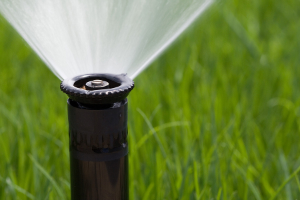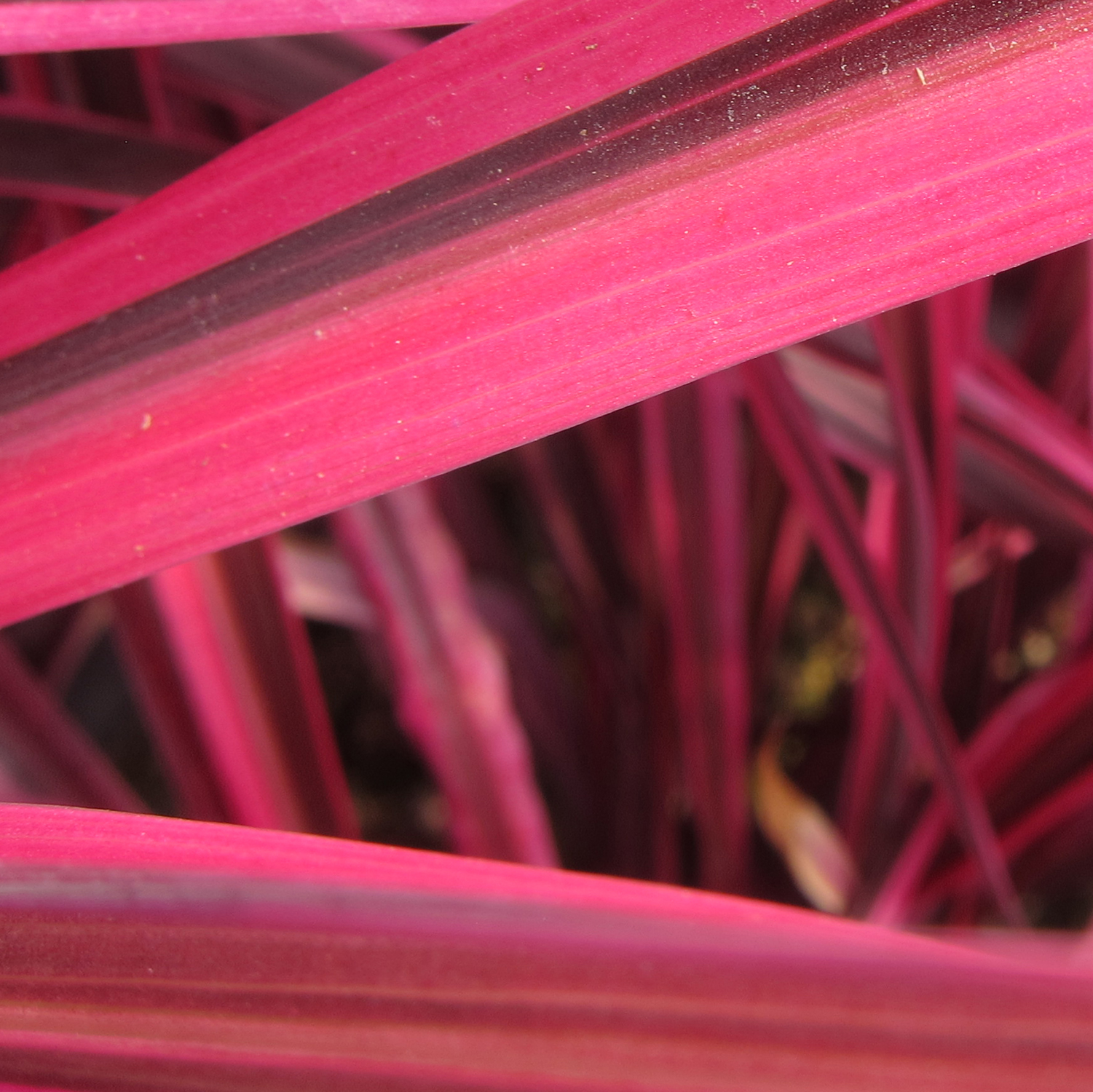
Armed with this knowledge, we have a better understanding of how much and how frequently we need to water so that the plants are not unduly stressed and we don’t waste our most valuable asset — water.
Watering your lawn
Lawns are normally watered by pop-up sprinklers, with the type of sprinkler (either a rotating jet or a fan spray) determined by the size of the area.
Fan sprays have a radius of throw from 3-4.5m and while some specialty nozzles are available, they are generally either a full 360-degree circle or part thereof. Fan sprays have a heavy precipitation rate — about 35-45mm per hour — so care must be taken to avoid run-off and ponding.
Jet sprinklers should only be used for areas greater than 6x6m. Jet sprays have a radius of 5-12m and are adjustable to any degree of the circle, from about 40 degrees to 360 degrees. Precipitation rates can be as low as 5mm per hour but 10-12mm per hour is normal.
All pop-up sprinklers should be spaced at “head to head” spacings (positioned at the edge of the radius) to give the most even application, and nozzles should be sized to give even precipitation. This means that if a full circle sprinkler is using 12 lpm then the half circle should use 6 lpm and the quarter circle 3 lpm.
Sprinklers should be placed on the edge of the area to be watered so overthrow is kept to a minimum.
Sub-surface drip irrigation is being used in some ovals and other turf areas but the costs associated with the backflow prevention devices make the system prohibitive for home gardens.
Watering flower beds
The type of system you should use for watering garden beds is dependent on the size of the area, but as most garden beds are narrow, micro irrigation systems are generally used.
Micro irrigation can be divided into three
main types:
• Mini sprinklers are generally full circle sprinklers that will emit water in a 3-6m diameter. They may be permanently positioned or set up on low-density poly tubing.
• Micro sprays are low-volume spray jets throwing water in a 1-2m radius. They are normally set up on low-density polythene tubing.
• Drippers may be either fixed flow (2, 4 or 8 lph) or adjustable types from 0 to 50 lph.
Micro irrigation is designed to operate at low pressures (100 to 200 kPa) and apply smaller amounts of water compared to sprays.
Generally speaking, surface rooted plants such as annuals and groundcovers react better with micro sprays and deeper-rooted shrubs and trees fare better with drippers. Ensure that if the garden beds are mulched the water actually soaks through the mulch to the soil beneath, otherwise precious water will be lost to evaporation. Drippers can be installed below the mulch but you’ll need to remember to check them for blockages every now and then.
Adjustable drippers allow the gardener to provide different amounts of water to individual trees and shrubs on the same pipe.
In larger and more dense landscapes, there is a trend towards irrigating plants using drippers in a grid pattern. The drippers are installed into the tubing at the time of manufacture and spaced at 0.3-0.5m apart to ensure the garden bed will receive a constant, even trickle of water throughout.
Care should be taken when installing micro systems that not too many outlets are placed on the tube. A tube of 13mm low-density poly will carry about 10 lpm without pressure loss; 19mm will carry about 25 lpm. Attaching additional sprays or drippers to an area that is already not being covered properly will only make the position worse if the maximum pipe flows have been reached. Also, be aware that drippers and sprays must not be placed on the same run as their application rates are very different.
To get the best result with pots, water with multi-outlet adjustable drippers.
Using automatic controllers
These are the brains of an irrigation system and the main tool in allowing us to save water. Controllers do not think for themselves and must be regularly reprogrammed to adjust to changing weather conditions.
When selecting a controller you need:
• Sufficient stations or zones to cover the areas required.
• Sufficient programs to allow different areas with different requirements to be programmed together.
• Run times to suit the system — drippers require longer run times.
• With current water restrictions, consider a controller that can be programmed for odd/even dates as well as interval dates.
• Select a controller with several start times to allow deep watering without run-off. The controller can then be run for short periods, but several times per night to allow the water to penetrate the soil.
To save water, consider fitting rain and wind sensors to the controller to over-ride the pre-set program in poor weather conditions. And to ensure the correct operation of all parts, and prevent the possible loss of plants, occasionally run the system manually.
Water restrictions are currently affecting almost all metropolitan areas throughout Australia, as well as some regional centres, which means homeowners have no choice but to alter their watering methods to reduce use. By watering plants more deeply but less frequently, for example, you can encourage plant roots to grow deeper into the soil. Frequent shallow waterings only wet the top few millimetres of the soil, increase evaporation losses and result in root development at the surface only.
For additional advice, contact your local state or territory branch of the Irrigation Association
of Australia.
Don Marriott Dip. Hort. (Burnley) is a Certified Irrigation Designer, Director of Advanced Irrigation Consultants Pty Ltd and a member of the Irrigation Association of Australia.






